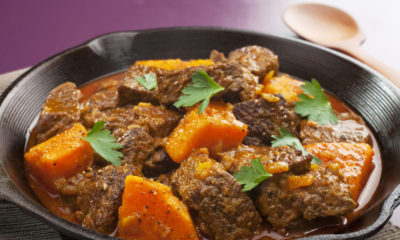Features
EJ Ogenyi: Minimize Empty Calories For A Trimmer Waist Line
 As Christmas and the New Year approach and the parties pile up, you’ll inevitably find yourself faced with potential diet slips at every turn. From the chocolate filled hampers at work to the fried chicken that you are planning to serve with Christmas dinner, these slips are always one decision away. Wanting to eat healthier or lose weight doesn’t mean that you have to say no at every turn, it just means that you need to be strategic about what you say yes to.
As Christmas and the New Year approach and the parties pile up, you’ll inevitably find yourself faced with potential diet slips at every turn. From the chocolate filled hampers at work to the fried chicken that you are planning to serve with Christmas dinner, these slips are always one decision away. Wanting to eat healthier or lose weight doesn’t mean that you have to say no at every turn, it just means that you need to be strategic about what you say yes to.
This article is focused on empty calories and what they are. The goal of giving you this information is to help you be a savvy holiday party planner and navigator.
What are Empty Calories?
Empty calories are those that add no significant nutritional value to your diet. To understand empty calories, you need to understand two terms – “Nutrient Dense” foods and “Calorie Dense” foods. Nutrient dense foods are very high in nutritional value when compared to the calories that they contain. Most unprocessed foods like fresh fruits, fresh vegetables, and whole grains like brown rice and oatmeal are considered nutrient dense.
For simplicity’s sake, calorie dense foods can be defined as calorie rich and nutrient poor. They tend to be highly processed variations of their nutrient dense counterparts. For example a boiled potato is nutrient dense especially when cooked and eaten with the skin, but chips (French fries) are calorie dense because they are processed by peeling the fiber rich potato skin and then deep-frying the peeled and sliced potatoes in oil.
This brings up an important point that no food is inherently bad for you, it is how you cook it that makes it “bad.” The way you cook (or process) these foods can add calories that add to your waistline and these calories do not always make the resulting meal more nutritious – hence making them empty calories.
Why Should You Care about Empty Calories?
Knowing what empty calories are and how you can recognize them can help you navigate your kitchen and a party food plate in a way that will help and not hurt your waistline. Some processing methods that add extra calories are:
Baking: The addition of a lot of butter and sugar add a lot of empty calories to cakes. Note that baking can also be a way to save calories when you are making oven-roasted versions of your favorite fried meat dishes.
Frying: The use of excess oil to deep fry foods add a lot of calories that you don’t need.
Peeling the Skin: There are some vegetables like yam and plantain where it is absolutely necessary to peel the skin. But others like potatoes and carrots have fiber rich skins that can be eaten when washed and/or cooked properly.
These methods are very relevant when you are preparing food in your kitchen and can be relevant when you are making food choices at a party.
How Will Knowing this Information Help You Navigate Diet Slips?
The easy way to eat at your healthiest at home or at a party is to prioritize nutrient dense and minimally processed foods. Going for minimally processed foods doesn’t necessarily mean cooking all organic or choosing fancy recipes that require exotic ingredients. Here are some examples of some simple minimally processed choices:
Choosing boiled white rice over fried rice since the boiled rice has no oil in it compared to its fried counterpart. Plus, you can control the oil in your meal by draining oil off your stew as you dish.
Going for moin moin (which is steamed) and vegetable over fried or jollof rice and fried meat at an occasion.
Eating the fruit in the office hamper instead of the shortbread cookies and chocolate.
One final trick to navigating these diet slips is to establish rules that will allow you to indulge a little. If you say no each and every time, you will eventually say yes in a big way when your willpower inevitably runs out. An example of one such rule is what I call 80/20 i.e. eating healthy 80% of the time and indulging 20% of the time. If you eat five times a day (3 meals and 2 small snacks), this means you allow yourself some empty calories in one of the meals. Or allow yourself one day in the week to say yes to the things you really want to eat.
All in all, knowing what constitutes empty calories can help you avoid or minimize them in a way that will have you looking fabulous without feeling deprived. Happy Eating!
Photo Credit: Dreamstime | Alanpoulson






















